The ABC’s of Almond Agaricus Mushrooms
This warm weather mushroom is superlative in any garden.
Meet the cousin to the white button mushroom, crimini and portabella: Almond Agaricus (Agaricus subrufescens). This sweet, fragrant summer mushroom is much easier to grow than its cousins. In fact, it can be grown in your garden compost.
Just like button mushrooms, it grows in compost, but does not require pasteurization, caves or grow houses. Anyone who has a garden … flower, vegetable, shade, or container, can grow this mushroom. You don’t necessarily need to plant them with vegetables or flowers, but plants help create necessary shade and harness humidity for perfect mushroom development when they are planted side by side. Grown together, there is also the mutual benefit from the CO2/O2 gas generated and exchanged by both plant and fungus, and the plants appreciate the released nutrients from the compost.
Almonds can be cultivated commercially (and in larger scale) in beds within high tunnels and greenhouses, or in areas outdoors where moisture can be added and monitored. It can grow in the shaded woods and sunny garden (best alongside big, leafy plants because of the added shade). Or, it can be grown “small scale” in window boxes or large potted plants, indoors or out. It can be planted May until early July in the North, earlier in the South, or whenever the last frost date is in your area. It is best to plant them so you can get at least 2-4 months of frost-free weather. Almond mycelium can actually survive some freezing weather, but developing baby mushrooms will not, so it’s best to pack in as much growing season as possible.
Almond Cultivation in 6 Steps:
- Gather supplies
- Find a site for the bed
- Build the bed
- Inoculate
- Mulch and maintain
- Harvest and enjoy!
- Supplies:
Spawn, compost (bagged or homemade), and a watering can or hose with spray nozzle are basically all you need. You will also want a mulch material to help maintain adequate moisture throughout the growing medium profile. For spawn rates, see Step 4 below.
- Site preparation and shade requirements:
Choose a location for your almond bed. The shade requirement for almonds are related to the ability to keep the bed moist during spawn run, and humidity to encourage large and succulent mushrooms when they fruit. This can be done outdoors in a fully sunny garden if you can provide lots of mulch and frequent, light watering from a sprinkler or soaker hose over the almond bed for its spawn run phase, and big leafy plants nearby to capture humidity for its fruiting stage. Chard, lettuces, zucchini, tomatoes and other large leafed vegetables are all suitable companions for almonds.
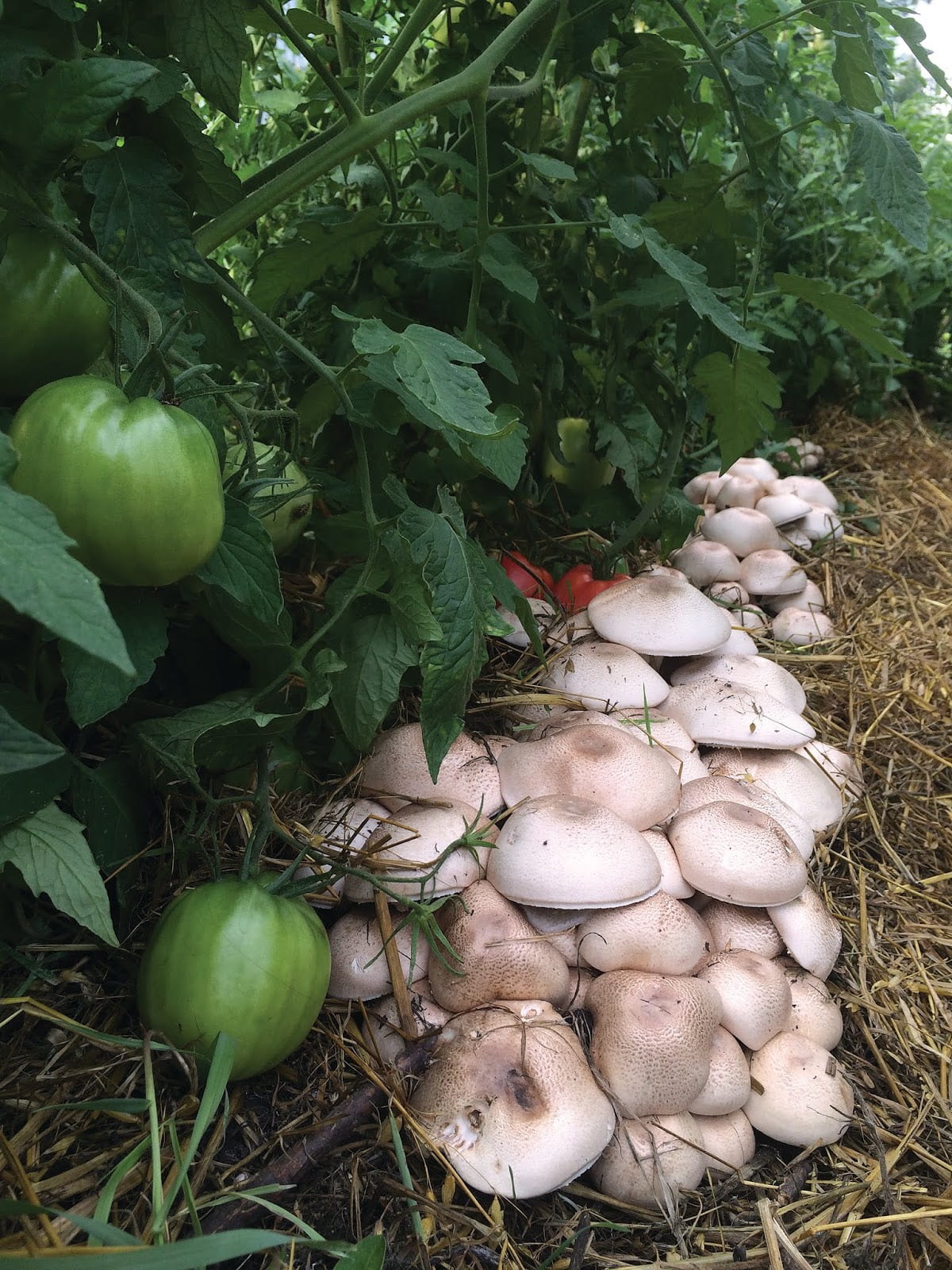
Almonds can be grown in abundance during the warm months of summer. Courtesy of Field and Forest Products
We have taken to growing all our tomatoes in a high tunnel, and it turns out to be a really good location for almond production as well. We live north of the 45-degree parallel, so the extra heat and extended season provided by the greenhouse plus the daily attention to plants and soil alike make for a great spot to grow almonds. We also plant beds constructed in the garden or forest, but yields are frequently lower because the bed is more likely to dry out due to our own negligence.
- Choose your compost and construct bed:
While mushrooms like shiitake and oyster must have undecomposed lignin and cellulose found in just-cut trees and other woody substrates, Almonds like rich, decomposed plant matter, further down the decay chain. As mushroom growers, we use both spent and composted Shiitake (sawdust) blocks and myceliated, composted oyster mushroom straw; a dual “waste” substrate. It’s pretty cool that you can grow two different mushrooms from the same substrate, just utilizing the food from different levels of decay. You can also use kitchen/garden waste compost, bagged composts and worm castings. We are still working with leaf-based mulch and compost, but cannot yet recommend it.
If you are using bulk or homemade compost, take the time to make sure the compost is moist enough, which is typically the biggest problem with using homemade compost. Use the “squeeze test” — grab a handful and squeeze as hard as you can. One or two drops of water should want to drip away. The compost does not have to be perfectly crumbly and finished, but you should aim for it to get this way.
For bed construction, we have tested several bed depths and spawn rates and have determined that beds 5 inches deep inoculated at a 5% rate (5 lbs. of spawn to 100 lbs. of compost) is optimal. Make attention to bed depth your priority. Deeper beds (but not too deep for the companion plants) are easier to maintain moisture, and shallower beds are prone to excessive drying requiring more constant watering.
* Note: Choose the right companion plant.It’s important to remember that compost is also considered a fertilizer and that too much might not be a good thing for some plants you may be considering to pair with your mushroom growing. Some of the nutrients are being used by the mushroom mycelium, so we honestly have never had too much leafy growth from our tomatoes even when planted into an extra thick compost bed. However, we are a little more reluctant to pair with plants like peppers which have a finicky reputation in regard to an overly rich soil.
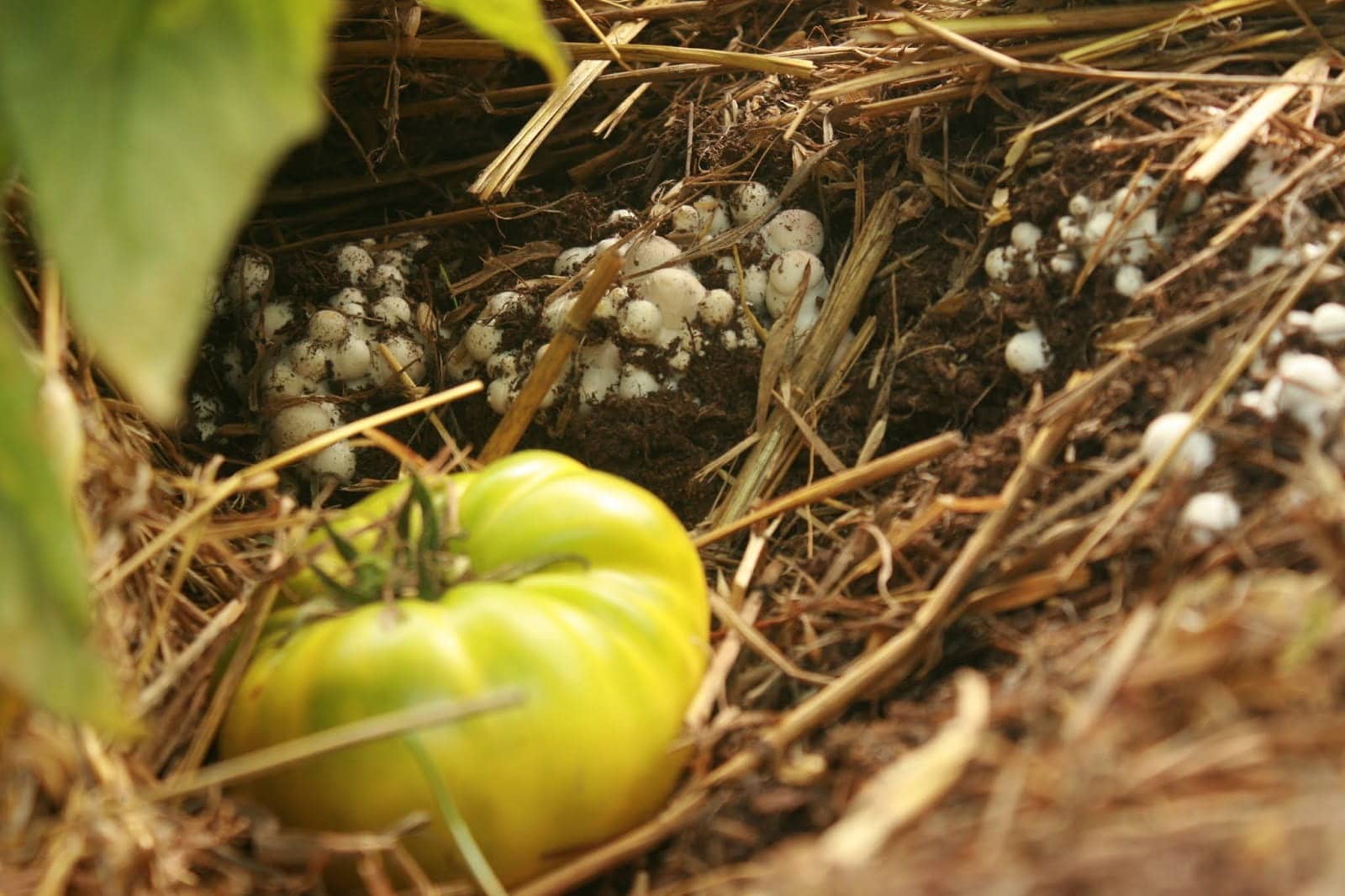
After initial knotting, real pins will start to develop which happens within days. Courtesy of Field and Forest Products.
4. Inoculation:
After the bed is laid out (if polyculturing, we plant our transplants first and build the bed around them), it’s time to inoculate. You will need about 10 lbs. compost per sq. ft. of bed space that is 5 inches deep seeded (inoculated) at a rate of 1/2 lb. spawn per sq. ft. A standard garden bed 3 ft. wide and 10 ft. long requires about 15 lbs. of Almond spawn.
Open the spawn bag and break off egg-sized pieces of spawn and bury on 6-8 inch centers apart in a grid pattern, making sure spawn is covered with some compost after inoculation (take a moment to enjoy the signature almond-ish fragrance of the almond spawn). Placing the spawn at different depths is also a helpful strategy.
- Mulching and spawn run
Keeping the bed moist is perhaps the biggest challenge — you will want to keep it damp to the very top of the compost. We have used straw, paper grain sacks, shredded office paper and cardboard to try to hold in moisture without excessive watering. The best so solution so far is cardboard kept moist by a soaker hose laid on top. Daily light sprinkling underneath dry cardboard or paper is almost daily work but is also quite effective. Leafy shade from the plant canopy really helps, even when the plants are young. This year we will be installing a small irrigation system which should give us effective, automatic coverage.
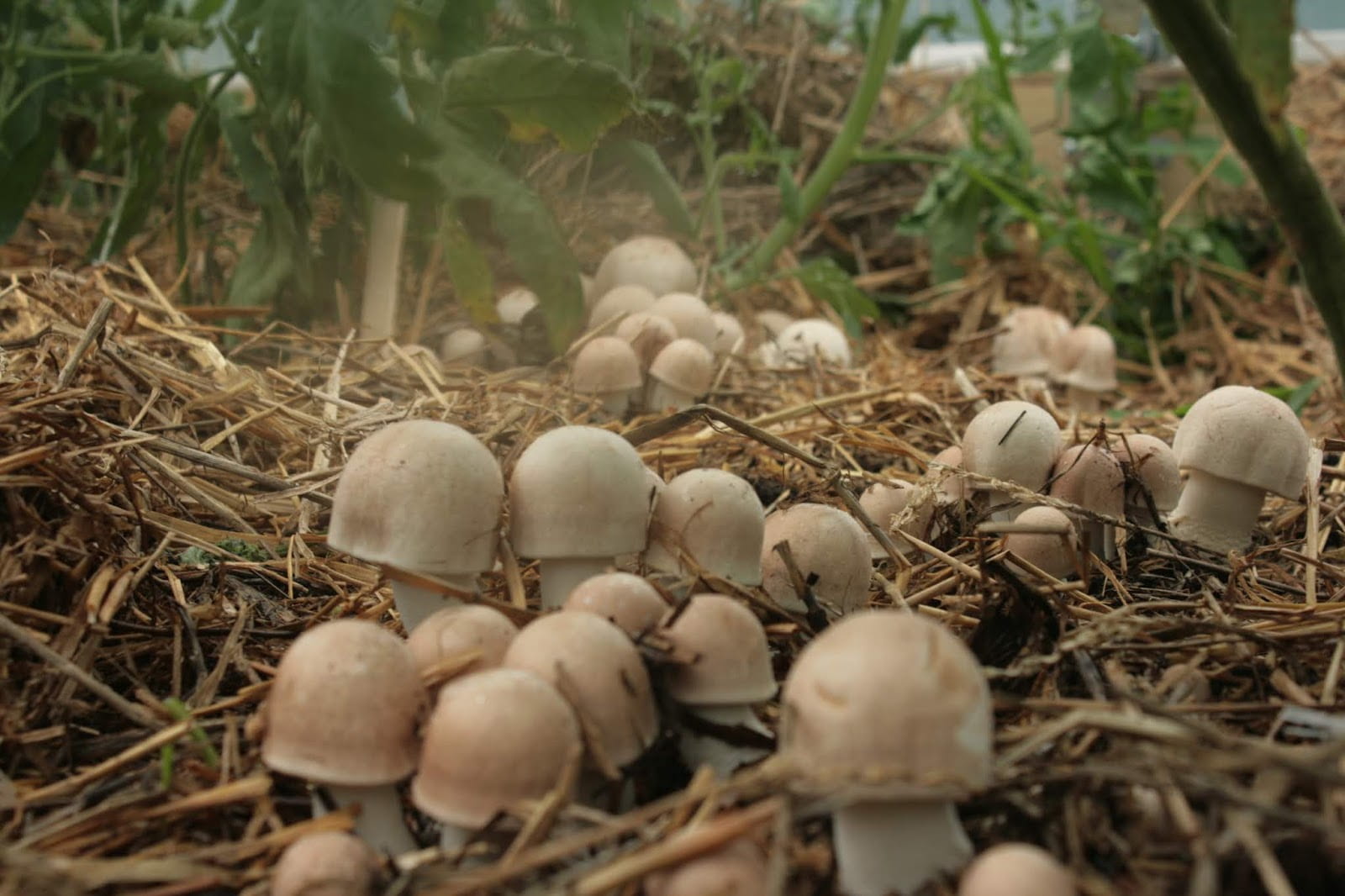
baby Agaricus emerge and benefit from an increased humidity during development. Courtesy of Field and Forest Products.
After 2-3 weeks, watch the beds closely. The mycelium will start to knot just prior to fruiting, indicating that mushrooms are on the way. Now is the time, as an option, to apply a casing layer (preferably just before this stage, as the compost starts to show 60 percent myceliation as shown in the photo above). A casing layer is just a nutrient poor, thin layer of a water holding material that helps increase yields. Adding this layer is optional. You will get plenty of mushrooms without it and it is an extra step. To get the most out of your planting though, application of this layer is helpful for maintaining bed moisture and reducing the need for constant watering. We make our casing out of peat moss and adjust the pH with a little hydrated lime (found at garden and farm centers).
We often skip the casing stage because fruiting happens faster than we expected and once fruiting occurs, we feel we have missed the window of opportunity, and we are happy with the yields even without it!
Casing recipe:
3 lb. peat moss
3 qt. water
1 1/2 T hydrated lime (look for types with less than 1% Mg (Magnesium) like Hi-Yield)
Mix well.
The mixture is spread out over the top of the bed, about 1/2″ deep. Cover with mulch again and wait for the spawn to grow up through the extra layer, usually 7-10 additional days. Once the mycelium, showing at the top of the bed, starts to move from a feathery look to little tiny knots, you will know that you are just days from a mushroom harvest. Keep things moist!
Keeping the bed moist is perhaps the biggest challenge — you will want to keep it damp to the very top of the compost. We have used straw, paper grain sacks, shredded office paper and cardboard to try to hold in moisture without excessive watering. The best so solution so far is cardboard kept moist by a soaker hose laid on top. Daily light sprinkling underneath dry cardboard or paper is almost daily work but is also quite effective. Leafy shade from the plant canopy really helps, even when the plants are young. This year we will be installing a small irrigation system which should give us effective, automatic coverage.
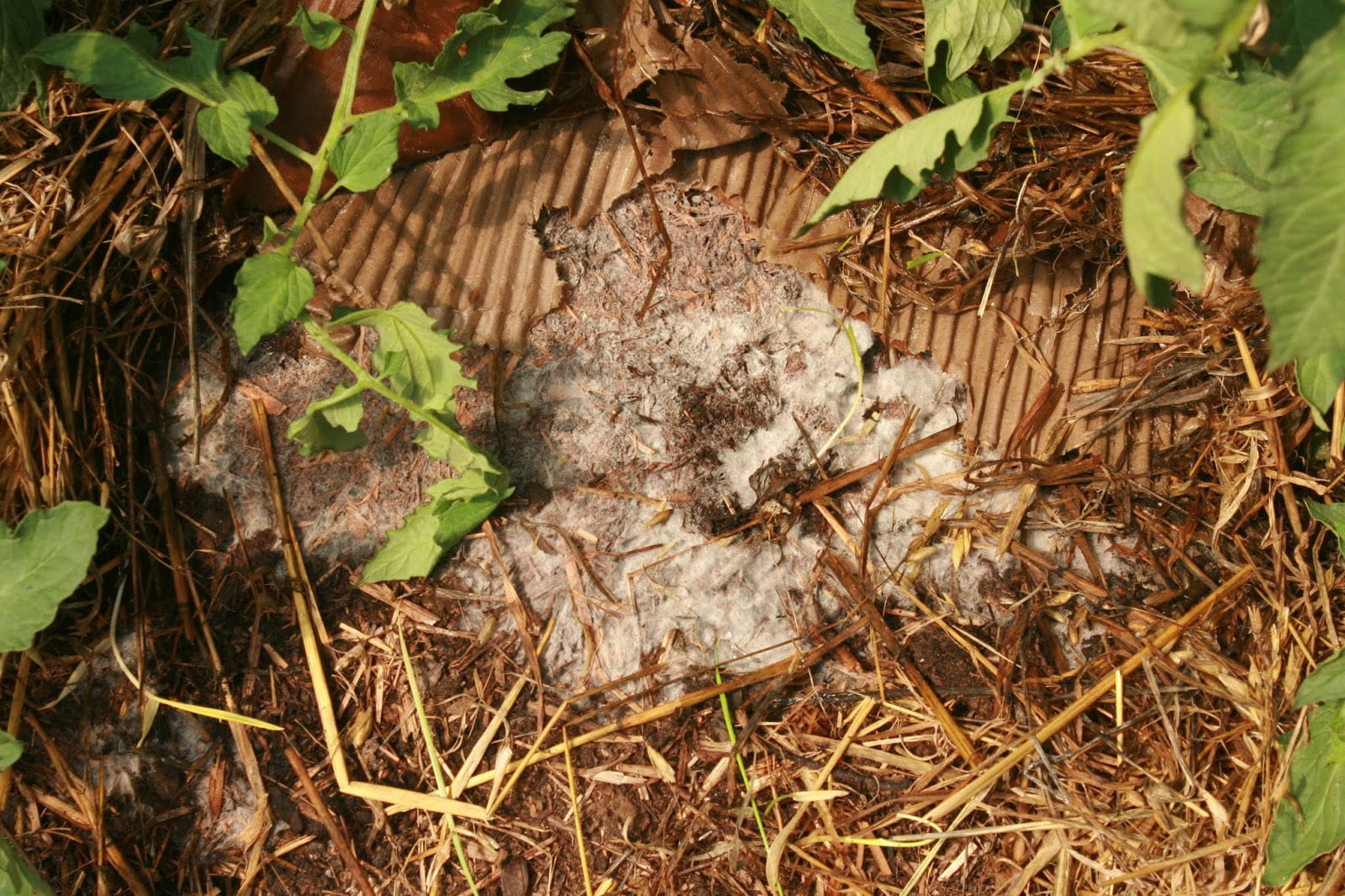
If you can get your cardboard to stay wet, the spawn run underneath will be excellent. Courtesy of Field and Forest Products.
- Harvest:
New flushes will continue every 2-3 weeks. The first flush will produce single, large mushrooms, with later flushes producing smaller mushrooms.
As the mycelium sets pins, you will be able to judge how large the mushrooms will be. We let the large pins develop into a more open mushroom, like a portabella, for stuffing or grilling use. Smaller pins are harvested closer to buttons as they store longer and transport easily.
From this point, keep the bed reasonably moist until freeze up. Expect mushrooms every few weeks after a good rain or heavy sprinkling from your garden hose.
This article originally appeared on the Field and Forest blog in 2015, where other articles can be found: https://mushroomingtogether.blogspot.com


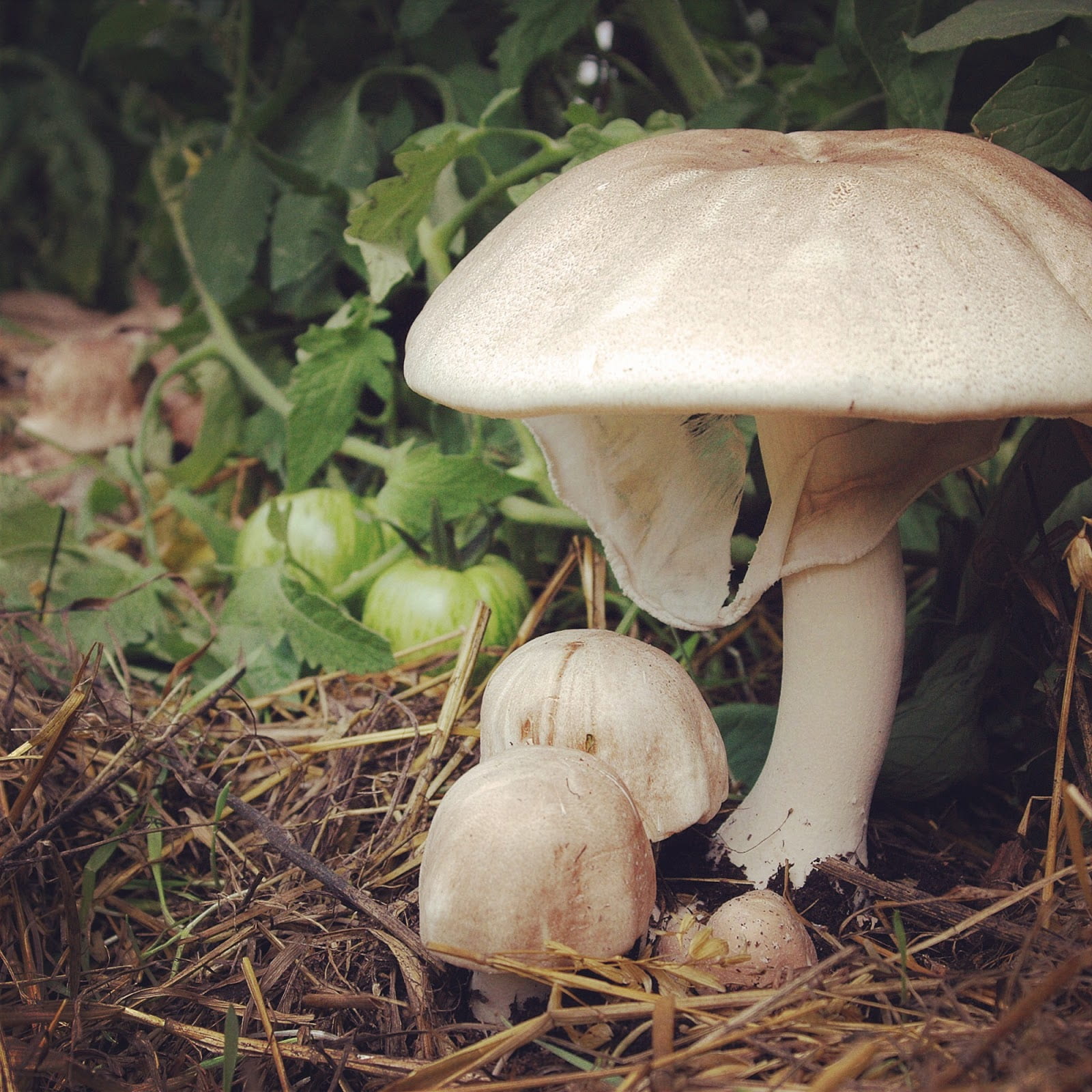
Is there a way to keep the spawn producing from one year to the next?
Hi Beverley,
I’d recommend reaching out to the author of this article, Mary Ellen, with your inquiry. Her website is: https://mushroomingtogether.blogspot.com/.
We have had it come back for a second year,even in MA,but its hit or miss
Hi, any update on you trials of bagged leaf mulches/ leaf material for agaricus cultivation?
How do you create the spawn?
Thanks for sharing it is Very Informative page, I hope it will be useful for all of us. , India’s indigenous COVID-19 Vaccine company Bharat Biotech IPO to get more valuable Information about Covid 19,
Stop it
Thanking You For Sharing this Informative Article
Nice Post
It is a Very Useful Article Thanking You For Sharing this article
Thanks for sharing it is a Very Informative page, I hope it will be useful for all of us
Thanks for sharing it is a Very Informative article
Our products are made of the highest quality raw materials, and we believe in providing the best solutions to our clients. Our team is full of highly qualified and experienced engineers who can quickly fulfill your requirement.
Thanking you For Sharing this informative articles
Thanking You For Sharing this Informative Article
Nice Post
Thank you for sharing this informative article
Great Work Sir Thanking you For Sharing
Thanks for sharing it is Very Informative page, I hope it will be useful for all of us.
Is there a way to keep the spawn producing from one year to the next?
Thank You Sharing this informative article
Thanking you for sharing this informative article
Thank you for sharing this informative article
Thank You for sharing this informative articles
Thank you giving this information. If anyone looking for coworking space in Gurgaon . Contact us for better price.
Thank you giving this information.